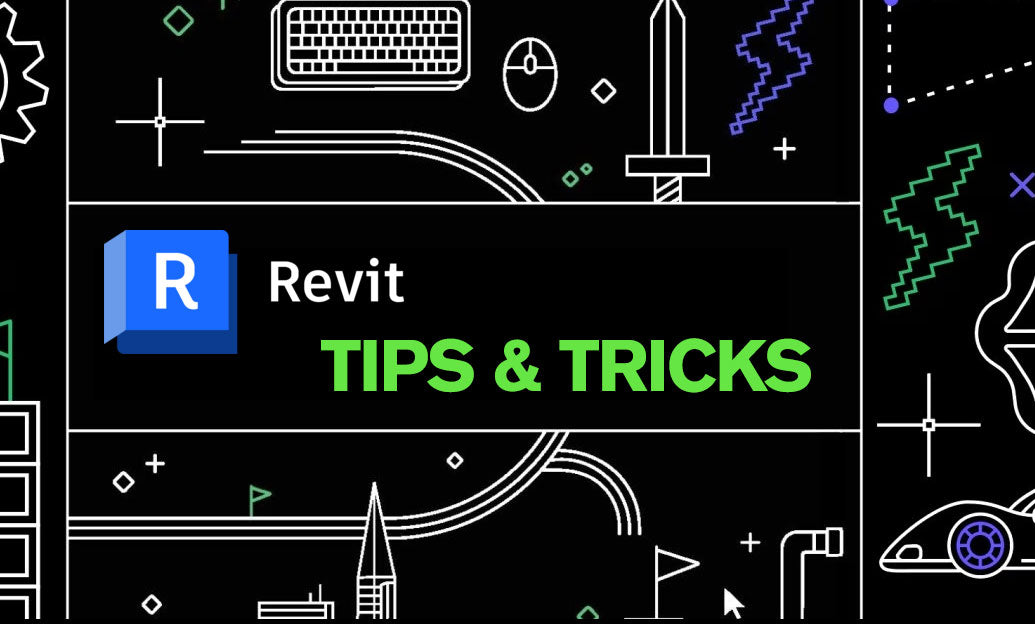Your Cart is Empty
Customer Testimonials
-
"Great customer service. The folks at Novedge were super helpful in navigating a somewhat complicated order including software upgrades and serial numbers in various stages of inactivity. They were friendly and helpful throughout the process.."
Ruben Ruckmark
"Quick & very helpful. We have been using Novedge for years and are very happy with their quick service when we need to make a purchase and excellent support resolving any issues."
Will Woodson
"Scott is the best. He reminds me about subscriptions dates, guides me in the correct direction for updates. He always responds promptly to me. He is literally the reason I continue to work with Novedge and will do so in the future."
Edward Mchugh
"Calvin Lok is “the man”. After my purchase of Sketchup 2021, he called me and provided step-by-step instructions to ease me through difficulties I was having with the setup of my new software."
Mike Borzage
Merging Realities: Exploring Virtual Production's Impact on Design and Storytelling
October 03, 2024 5 min read


Introduction to Virtual Production Design
Virtual production is a cutting-edge approach that merges physical and digital elements to create immersive visual experiences in real-time. It is a process that leverages advanced technologies to blend live-action footage with computer-generated imagery (CGI), enabling creators to visualize and manipulate scenes dynamically during production. This methodology is increasingly relevant to both the film and architecture industries, as it allows for unprecedented levels of creativity, flexibility, and collaboration. In the realm of film, virtual production transforms the way storytelling is approached, providing directors and cinematographers with the tools to visualize complex scenes and environments before they are physically constructed or rendered in post-production. In architecture, it offers architects and designers the ability to explore and present their designs in an interactive and immersive manner, enhancing the understanding of spatial relationships and design intent. The convergence of film and architecture through virtual production is primarily driven by technological advancements that have revolutionized how visual content is created and experienced. Real-time rendering engines, enhanced motion capture systems, and sophisticated visualization tools have collectively enabled this fusion. High-performance computing and graphics processing units (GPUs) now allow for complex calculations and rendering tasks to be performed instantaneously, bringing virtual environments to life with stunning realism. Additionally, developments in augmented reality (AR) and virtual reality (VR) technologies have expanded the possibilities for interaction and immersion. These tools have not only increased efficiency but have also opened up new avenues for creative expression and experimentation in both industries. Collaboration between architects, filmmakers, and digital designers is of paramount importance in harnessing the full potential of virtual production. Each discipline brings unique perspectives and expertise that, when combined, can lead to innovative solutions and groundbreaking projects. Architects contribute their knowledge of spatial design, materials, and structural integrity; filmmakers bring insights into narrative structure, pacing, and visual storytelling; digital designers provide the technical proficiency in software, modeling, and animation. By working together, these professionals can push the boundaries of what is possible, creating experiences that are both aesthetically captivating and functionally sound. Such interdisciplinary collaboration also fosters a culture of continuous learning and adaptation, which is essential in the rapidly evolving technological landscape.
The Intersection of Film Techniques and Architectural Practice
Cinematic storytelling has a significant impact on architectural design, influencing how spaces are conceptualized, experienced, and interpreted. Both film and architecture share a common objective of shaping human experiences and evoking emotions through carefully crafted environments. Architects can draw upon cinematic techniques to enhance the narrative quality of their designs, using elements such as lighting, perspective, sequencing, and composition to guide occupants through a spatial journey. By incorporating storytelling principles, architects can create spaces that not only serve practical functions but also convey deeper meanings and evoke specific emotional responses. The use of narrative elements in spatial design involves considering how users interact with and move through a space, much like characters in a film navigate through scenes. Architects can manipulate factors such as scale, proportion, light, and materiality to create a sequence of experiences that tell a story. For instance, a building entrance might be designed to elicit a sense of awe or anticipation, leading to interior spaces that unfold in a purposeful manner. By orchestrating these experiences, architects can influence the mood and behavior of occupants, making the built environment more engaging and meaningful. The role of visual effects and storytelling in urban environments is becoming increasingly prominent as cities seek to enhance public spaces and foster community engagement. Techniques borrowed from film, such as projection mapping, interactive installations, and dynamic lighting, can transform urban landscapes into vibrant canvases for artistic expression and social interaction. These elements can animate plazas, buildings, and streetscapes, creating immersive environments that captivate residents and visitors alike. By integrating storytelling into urban design, planners and architects can highlight cultural narratives, celebrate local heritage, or address social issues, thereby strengthening the connection between people and place.
Tools and Technologies Driving Virtual Production
The advancement of virtual production is heavily reliant on a suite of powerful software and hardware tools that enable the creation and manipulation of complex digital environments. Central to these are real-time engines such as Unreal Engine and Unity, which provide robust platforms for building interactive 3D content. These engines offer high-fidelity rendering capabilities, realistic physics simulations, and extensive libraries of assets and materials, making them indispensable tools for both filmmakers and architects. They allow creators to visualize scenes with immediate feedback, facilitating rapid prototyping and iteration. The integration of augmented reality (AR) and virtual reality (VR) tools has significantly enhanced architectural visualization. AR technology overlays digital information onto the physical world, enabling designers to bring virtual elements into real environments. This can be particularly useful during presentations or on-site consultations, where stakeholders can see proposed designs in context. VR provides fully immersive experiences, allowing users to explore virtual spaces as if they were physically present. This is invaluable in conveying the scale, ambiance, and spatial relationships of a design, leading to better-informed decision-making. The benefits of these technologies in simulating environments and enhancing design processes are manifold. They enable more effective communication of design intent, reducing misunderstandings and aligning expectations among project teams and clients. Real-time visualization tools streamline the design process by allowing immediate assessment of changes, thus accelerating project timelines. These technologies also support a more collaborative workflow, where multiple stakeholders can interact with and influence the design in real-time. To clarify the advantages:
- Real-Time Feedback: Allows instant visualization of changes, facilitating rapid design iterations.
- Enhanced Communication: Improves understanding among team members and stakeholders through immersive experiences.
- Cost Reduction: Identifies potential issues early, minimizing costly revisions during construction.
- Increased Innovation: Encourages exploration of unconventional ideas by reducing barriers to experimentation.
- Client Engagement: Provides clients with a tangible sense of the final product, increasing satisfaction and confidence.
Future Implications and Trends
Looking ahead, the convergence of film and architecture through virtual production is anticipated to continue evolving, driving significant changes across multiple industries. One major trend is the rise of digital twins, which are precise digital replicas of physical assets, processes, or systems. In architecture and urban planning, digital twins enable the simulation and monitoring of buildings and infrastructure in real-time, facilitating better maintenance, optimization, and decision-making. This technology can lead to smarter, more responsive built environments that adapt to the needs of their users. Immersive environments are also set to become more prevalent, as advancements in XR (extended reality) technologies make these experiences more accessible and refined. These environments will not only enhance design visualization but also support remote collaboration, allowing teams from around the world to work together within a shared virtual space. This has profound implications for how projects are managed and how talent is sourced, breaking down geographical barriers and fostering global collaboration. The potential impacts on industries beyond architecture and film are significant. In video game design, the same technologies used in virtual production can enhance game development processes, enabling more complex and lifelike virtual worlds. Urban planning can benefit from simulation tools that model traffic flows, environmental conditions, and social dynamics, leading to more sustainable and livable cities. Other sectors, such as healthcare, education, and retail, may also adopt these technologies to improve service delivery and user engagement. The importance of interdisciplinary collaboration for future innovations cannot be overstated. As technology continues to advance at a rapid pace, the challenges and opportunities it presents require a collective effort from professionals across different fields. Architects, filmmakers, technologists, and other creatives must work together to explore new frontiers and develop solutions that are both technologically sophisticated and human-centric. This collaborative approach will be essential in addressing complex global challenges and in harnessing technology for the betterment of society.
Also in Design News

ZBrush Tip: Optimizing Workflow Efficiency Through Custom Hotkeys in ZBrush
January 02, 2025 2 min read
Read More
Revit Tip: Enhancing Project Consistency and Efficiency with Custom Revit View Templates
January 02, 2025 2 min read
Read More
AutoCAD Tip: Enhance Precision with AutoCAD Align Command Techniques
January 02, 2025 2 min read
Read MoreSubscribe
Sign up to get the latest on sales, new releases and more …


